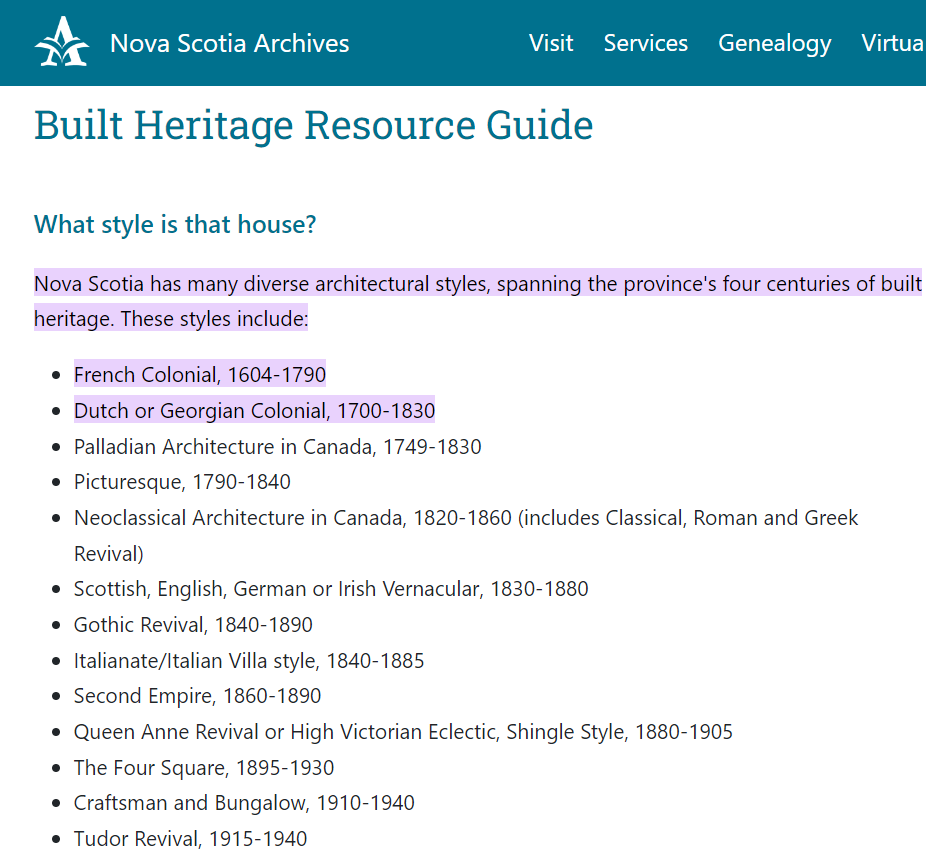DRAFT RESEARCH STATEMENT
The hidden visual identity of place.
Using the unique characteristics of both rurual and urban communities of Nova Scotia as the subject of research, how do we express, define and capture the unique visual identity of where we live — and how do these signifiers and characteristics provide hidden socio-political context to give deeper undertsanding of our collective identity.
SITE DATA COLLECTION
BRIDGEWATER, NS
To kick my primary research off I drove an hour to Bridgewater, which due to its proximity to the LaHave river, has plenty of historic homes and a distinct visual look. I wandered the residential streets and took photos of homes that I felt were representative of this area, or had interesting qualities about them, using some the guidelines I developed inspired by the Bechers.
Research themes and areas
While I’m still working out what my question will be, I’ve honed in on my areas and themes of research – all revolving around the visual identity of place.
There’s an urgency to capture and preserve the visual signifiers of where I live as rapid development and gentrification are changing the landscape. Not only is this impacting the look and feel of the city, but also the culture, as the way neighbourhoods are used and by whom they are now occupied transforms.
I plan to investigate the visual identity and signifiers of Halifax, Nova Scotia // discover unique architecture and visual traits // visual memory of place and home
I’d also like to research what else is being developed in this space including art installations, exhibitions and publishing.
First drafts of research area and quesTion
How do we capture, define, preserve and express the unique visual identity of where we live — and how do these visual signifiers and architectural characteristics provide hidden context to give deeper understanding of our history and collective identity, as gentrification moves rapidly to remove
The hidden visual identity of place.
Using the unique characteristics of both rurual and urban communities of Nova Scotia as the subject of research, how do we express, define and capture the unique visual identity of where we live — and how do these signifiers and characteristics provide hidden socio-political context to give deeper undertsanding of our collective identity.
RESOURCES
I took stock of what resources are available to me locally as I move through this project, and took note of the Nova Scotia Archives, and the campus library of my undergrad alma mater; Nova Scotia College of Art & Design University. As much as I value the ability to download and explore books digitally through the Falmouth online library, I find being able to thumb through the pages of a book and add page markers helps me work through content and actually absorb the content, as opposed to skimming quickly through a digital pdf.
NS ARCHIVES
NS Archives have endless reference material related to architecture and buildings
The Nova Scotia College of Art & Design University campus, the library is the red brick section on the right
RESEARCH & READING
Below are articles, websites and readings I’ve been looking at as part of my secondary research.
The art of gentrification: city data made beautiful
Graphic designer Herwig Scherabon visualises the data behind gentrification using a striking array of different styles. These examples look at the patterns of income inequality and segregation in large cities, from London to LA
I’m really interested in how to visually represent data to communicate social issues, rather than just presenting information back. I like how these all provoke thought or feeling in the way they are organized and curated.
Two Latinx Artists Take On Gentrification from the Perspective of Those Displaced
Shellyne Rodriguez and Danielle De Jesus powerfully respond to the continued attacks on their neighborhoods with works that validate and uplift elements of everyday urban Latinx life that are usually devalued.
The artistry here helps present a social issue back in a beautiful way that positions the conversation in the context of fine art.
No Balconies or Luxury Toilets: How This City Fought Soaring Rents and Lost
Rents are rising at a record pace in Berlin despite anti-gentrification rules and rental caps
Below is an excerpt from the article: What Role Do Artists Play in Gentrification?
In 2015, Los Angeles-born artist London Kaye hung a large, crochet depiction of three children inspired by Wes Anderson’s movie Moonrise Kingdom and the twins from the 1980s thriller The Shining on a building in Bushwick next to the popular Bushwick Flea (an upscale flea market). She captioned the corresponding Instagram post with the hashtags #yarnbomb, #streetart, and #bushwick.
A few weeks later, Will Giron, a lifelong New Yorker and tenants’ rights activist, came to visit his aunt in the neighborhood. It was her building that had been yarn-bombed, and Giron was angry. Kaye had not asked permission to hang her work and when Giron complained to her and the head of Bushwick Flea, Rob Abner, he was met with a strong response: Abner threatened to call the Department of Health on his aunt, who sells Salvadorian food outside of her building, and said Giron should be grateful, because the crochet art would likely increase the value of his aunt’s property.
To Giron, it wasn’t only about the art. He felt like his family’s neighborhood was being overtaken by white outsiders, lured in part by Bushwick’s new creative scene, which didn’t care about the desires of those there before them.
“It was really about agency,” Giron told me recently. “People come in and act like they can do whatever they want. Kaye wouldn’t have done the same thing on Long Island or in a white neighborhood.”
I looked to see how community-forward design and planning could help with safety issues. While this source should be taken with a large grain of salt, when neighbourhoods are gentrified through design, it also changes the way the space is used. Places that have little to no street-facing spaces like porches, benches, or small gardens, have less community networks and could see a rise in crime.
More examples of visualizing data.
An important distinction to understand in this area of research.






















